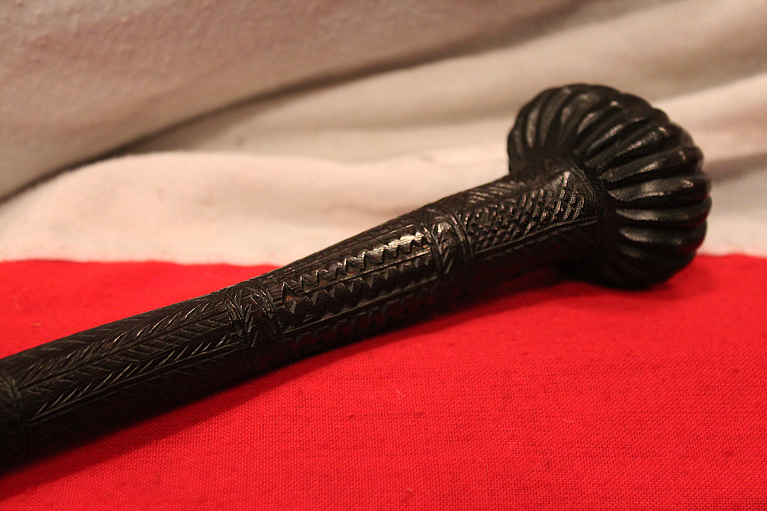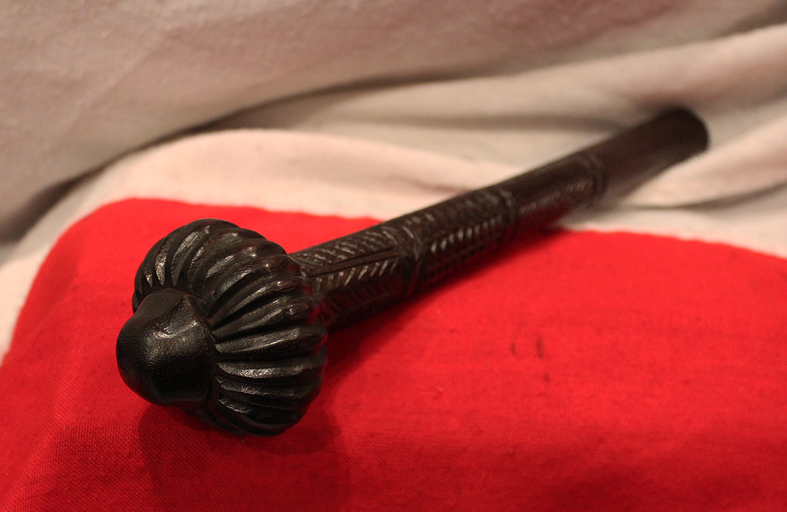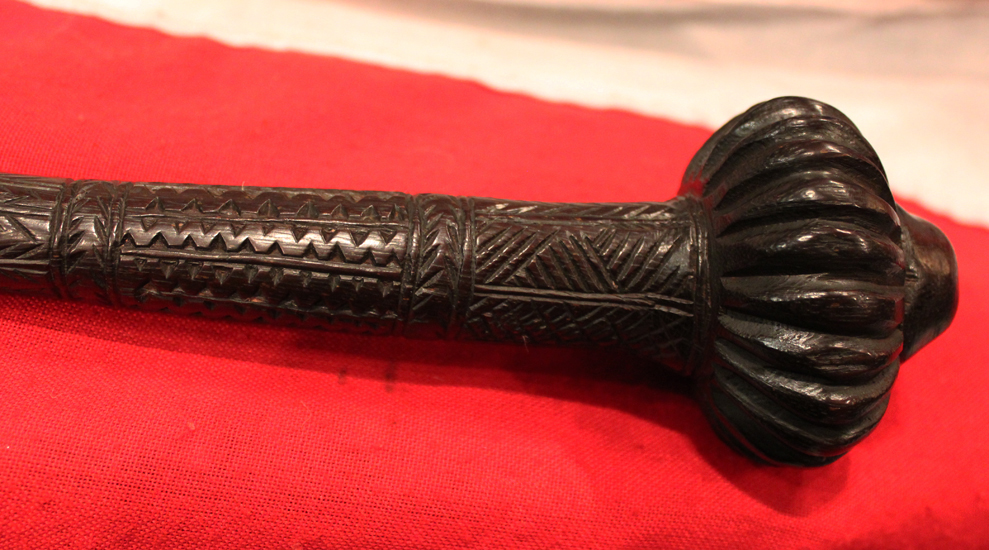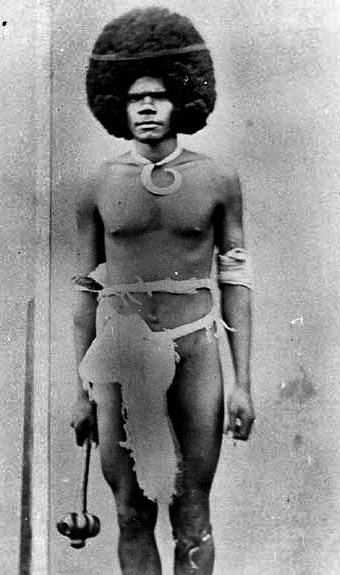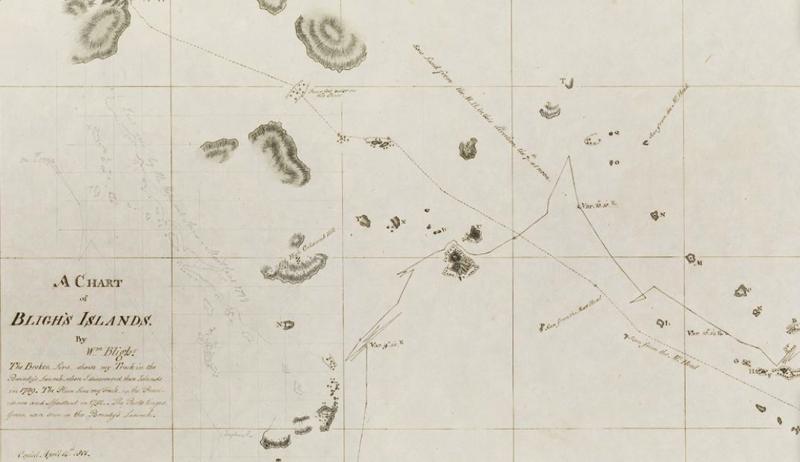A Fine & Beautiful Museum Piece. An Original Antique Fijian Ula, A Throwing War Club. A Singularly Beautiful Example & of Exceptional Rarity, From A Fijian Warring Cannibal Tribe Circa 18th Century Lt. Bligh RN of the Mutiny On The Bounty Period
A handsomely hand carved hardwood throwing club "ula" showing a stunning natural, age patina. With fine globed assymetrical head with top knob, and geometric carved patterning on the haft. It is perhaps the most famous and recognizable of all oceanic weapons.
The ula was the most personal fighting war weapon of the Fijian warrior and was carried, inserted into a warrior’s fibre girdle sometimes in pairs like pistols.
The throwing of the ula was achieved with great skill, precision and speed. It was often carried in conjunction with a heavier full length club or spear which served to finish an opponent after initially being disabled by a blow from the ula. It was made by a tribal weapon specialist from a variety of uprooted bushes or shrubs.
Across 1,000 kilometres (620 mi) from east to west, Fiji has been a nation of many languages. Fiji's history was one of settlement but also of mobility. Over the centuries, a unique Fijian culture developed. Constant warfare and cannibalism between warring tribes were quite rampant and very much part of everyday life. During the 19th century, Ratu Udre Udre is said to have consumed 872 people and to have made a pile of stones to record his achievement."Ceremonial occasions saw freshly killed corpses piled up for eating. 'Eat me!' was a proper ritual greeting from a commoner to a chief.
The posts that supported the chief's house or the priest's temple would have sacrificed bodies buried underneath them, with the rationale that the spirit of the ritually sacrificed person would invoke the gods to help support the structure, and "men were sacrificed whenever posts had to be renewed" . Also, when a new boat, or drua, was launched, if it was not hauled over men as rollers, crushing them to death, "it would not be expected to float long" . Fijians today regard those times as "na gauna ni tevoro" (time of the devil). The ferocity of the cannibal lifestyle deterred European sailors from going near Fijian waters, giving Fiji the name Cannibal Isles; as a result, Fiji remained unknown to the rest of the world.
According to Fijian legend, the great chief Lutunasobasoba led his people across the seas to the new land of Fiji. Most authorities agree that people came into the Pacific from Southeast Asia via the Malay Peninsula. Here the Melanesians and the Polynesians mixed to create a highly developed society long before the arrival of the Europeans.
The European discoveries of the Fiji group were accidental. The first of these discoveries was made in 1643 by the Dutch explorer, Abel Tasman and English navigators, including Captain James Cook who sailed through in 1774, and made further explorations in the 18th century.
Major credit for the discovery and recording of the islands went to Captain William Bligh who sailed through Fiji after the mutiny on the Bounty in 1789.
The first Europeans to land and live among the Fijians were shipwrecked sailors and runaway convicts from the Australian penal settlements. Sandalwood traders and missionaries came by the mid 19th century.
Cannibalism practiced in Fiji at that time quickly disappeared as missionaries gained influence. When Ratu Seru Cakobau accepted Christianity in 1854, the rest of the country soon followed and tribal warfare came to an end.
Trade of sandalwood was the dominant feature of the opening of markets between Europeans and the islands, and the finest early Fijian weaponry likely came to Europe from the earliest maritime visitors in the 18th century to early 19th century.
This Ula would likely have been made and used at the time of Lt Bligh and his journey upon HMS Bounty.
'A Chart of Bligh's Islands Fiji by William Bligh. The Broken Line shows my Track in the Bounty's Launch when I discovered the Islands in 1789. The Plain Line my Track in the Providence and Assistant in 1792. The parts tinged Green were seen in the Bounty's Launch.' Added and inscribed in pencil on the left is 'Land seen by the ships Hope and Ann -Captain Maitland, 1799'. Made in ink and pencil on tracing paper, dated 14 April 1801. See Bligh's chart in the gallery
The Ula is approx 13 inches long
Code: 22806
1750.00 GBP


